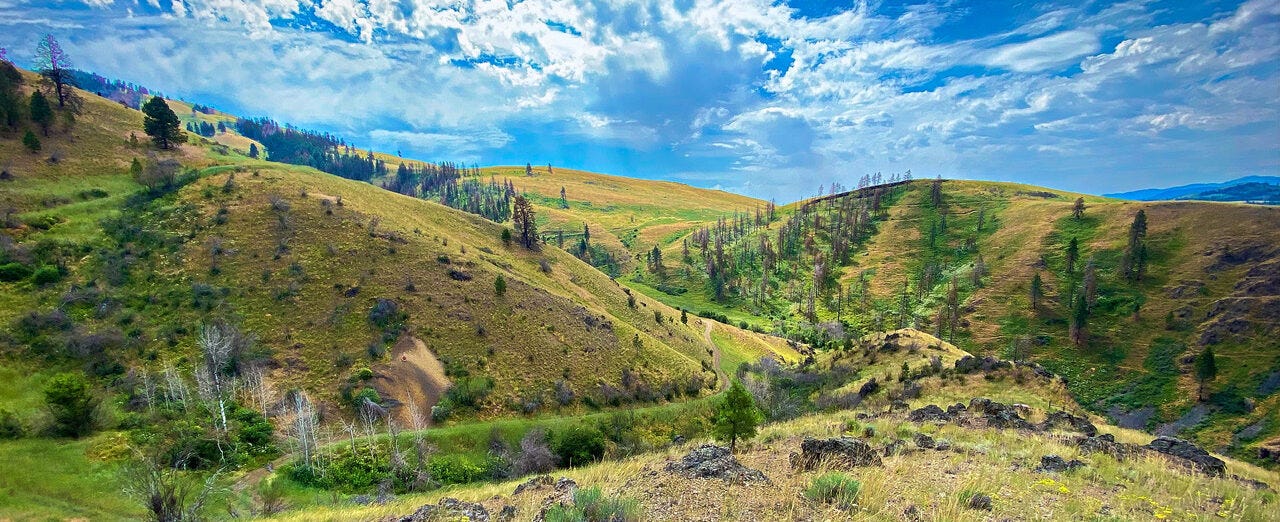BIG...but Complicated.
Hercules Metals (BIG.V) started out as Hercules Silver looking for silver deposits at the Mt. Cuddy suture of the Izee/Olds Ferry terranes. All that changed when the company sank a deep hole and hit serious copper mineralization. I wrote about the copper excitement back in November of 2023.
Silver was largely forgotten in the rush to define what looked like it might be a copper porphyry. Hercules embarked on an ambitious drilling campaign, largely financed by Barrick which was interested enough in the copper to invest 23 million in BIG. The 2024 drilling campaign was, literally, prospecting with a drill and produced fascinating but unspectacular results.
BIG’s management was criticized for running a somewhat amateur and very expensive drill campaign. Unfairly, in my view. The fact was and is that the Mt. Cuddy mineralization is hosted in very difficult rock, holes were started which could not be completed, the ground itself was challenging and the drilling season relatively short. But, most of all, the geology of Mt. Cuddy is not at all obvious.
Early stage exploration is about drilling into IP disclosed “blobs”, areas of chargeability which indicate, indirectly, the possibility of mineralization. In a perfect world a blob is a discrete, continuous structure. Of course, in the real world, such structures are almost never found. Instead, over the roughly 225 million years since the mineralizing magmatic event which, so far, accounts for the silver at the Bayhorse (BHS.V) mine and at Mt. Cuddy, geology has not stood still. What might have been a discrete blob 225 million years ago, has been twisted, perhaps broken, and if independent consultant Jamie Wilkinson is right,
Leviathan's shallow enrichment zone formed through a hypogene process known as "telescoping", in which epithermal fluids overprinted and upgraded earlier porphyry mineralization. Unlike supergene enrichment, which is limited to narrow blankets of near-surface weathering, telescoping implies significantly greater scale and grade potential. (link)
And that is just the easy part of a very technical news release.
One of the huge challenges to prospecting with a drill is figuring out where your drill is best targeted and that is where the actual science of geology comes into play. Once you have drill core you can look at the orientation of the rock, the different mineralisation in that rock, the way in which one type of mineralisation interacts with another at a microscopic level and the geo-chemistry. This allows you to come up with a hypothesis as to the origin of the copper-bearing rock you are interested in and that hypothesis guides the drill.
This sort of work and thinking, along with last year’s core and further IP, position BIG for a fruitful drill season this year:
New 3D geological and structural modeling highlights a pronounced southeast dip to the system, encompassing the hypogene enrichment zone. Earlier drilling was based on a shallow, gently dipping blanket model; however, the enrichment is now interpreted to extend significantly deeper along southeast-dipping feeder structures. The upcoming northwest-oriented fence drilling campaign is specifically designed to test this revised model and evaluate the true vertical extent of enrichment along these newly defined structural controls.
BIG started drilling around the 1st of April (Update: this is a little more definite than it should be. BIG should have started drilling around the 1st, there is no confirmation that it actually has). There should be holes completed by now, with core sent for assay. This year’s program is targeted at 12,000 meters, so there should be news flow through the fall. The retail market will be focused on whether or not economic intervals of copper turn up. The larger story is actually whether or not the drilling confirms BIG’s new thinking on the scale of the Mt. Cuddy deposit.
If the drill confirms that the deposit is larger than was first thought and if the Wilkinson “telescoping” theory is borne out, Hercules will be ripe for a much larger company to step in and buy out the Mt. Cuddy project. BIG has a current market cap of 167 million dollars, paying a billion for the company would make a lot of sense if the copper deposit were on the scale of the Resolution deposit in Arizona. A deposit which Wilkinson considers an analogue to the potential deposit at Mt. Cuddy.
While it would be wonderful if BIG posted good to great copper grades, the real value of this year’s drilling will be to test the Wilkinson hypothesis. If that scientific concept proves out, the scope and scale of the Mt. Cuddy project will expand enormously.
(Disclaimer: I hold shares in Hercules Metals and may buy or sell at any time. This is not investment advice. Do your own due diligence. Call the CEO.)



